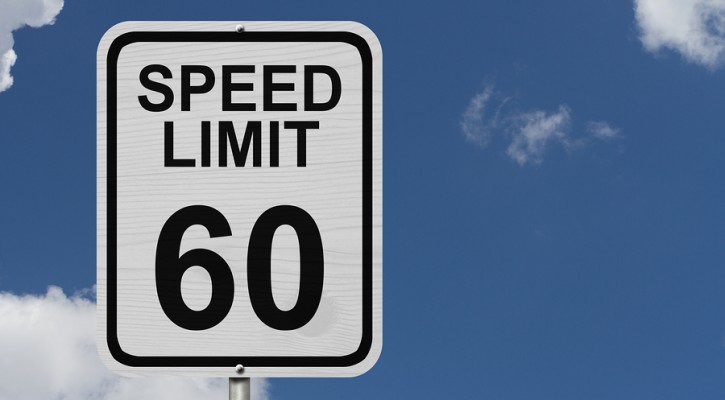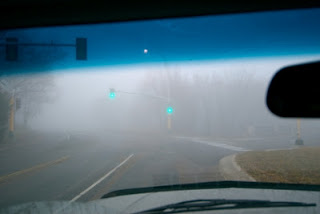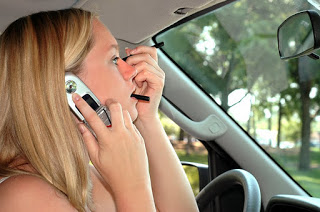Tag Archive: Speeding

Ask The Driving School Instructor: Why do people drive above the speed limit?
August 18, 2014
Question: Why do people drive above the speed limit?
Answer: There are several different reasons why people tend to drive above the speed limit but none of those reasons are valid.
The top two reasons that people tend to drive faster are: Continue Reading

Top Ten Bad Driving Habits By Teens
March 9, 2014
When teens first start learning to drive, they are usually very careful and willing to listen to advice but, once they get their operator’s license and start driving on their own, some seem to think that all the rules and safe driving advice were just for the driving exam and no longer apply to them. That attitude quickly turns to tragedy for some with an average of six teens killed and 493 injured in traffic crashes every day. More than half of all teen crashes are single vehicle crashes, meaning that, due to high speed or distractions, the teen ran off the road and crashed; no other cars were involved.
The following list of bad teen driving habits isn’t in any particular order. One could be just as bad as another but separately or combined, they are all dangerous.
1. Driving distracted – One of the biggest hazards on the road today is distracted driving. We’ve all heard about the dangers of texting and cell phone use but there are other distractions as well, such as;
- Paying more attention to passengers than to the road ahead.
- Eating and drinking
- Loud music
- Applying makeup
- Looking at things out the window instead of at the road.
- Adjusting the radio or loading CDs
All of these distractions can take your eyes off the road just long enough for a dangerous problem to creep up unnoticed. Continue Reading

Managing Speed: Tips for Teen Drivers
March 9, 2012
A 2009 analysis of speeding-related crashes by the National Highway Traffic Safety Administration (NHTSA) shows that following the speed limit is not enough to prevent a crash when conditions warrant a reduction in speed. The study showed that in speeding-related crashes that caused one or more injuries, 26% of the crashes were contributed to be exceeding the posted speed limit, while 74% were due to driving too fast for conditions. In property-damage-only crashes where speed was a contributing factor, 18% of the crashes were due to exceeding the posted speed limit and 82% of the crashes were contributed to by driving too fast for conditions.
Drivers should reduce their speed:
- immediately when it begins to rain and when driving through standing water. Roads become very slippery just after the rain begins, because the rainwater mixes with oil on the road that has been dropped from passing vehicles. Driving too fast on wet roads can result in skidding, when the vehicle loses traction with the road and the driver loses control of the vehicle. Never drive through standing water if you do not know how deep it is.
- in foggy or smoky conditions. Fog and smoke make it difficult to see ahead, and reducing speed reduces stopping distance.
- before a curve. Too often, drivers realize that they are moving too fast when they are already in the curve, but lowering speed in a curve results in a loss of traction that could cause a skid. Always reduce speed before entering the curve.
- in construction zones. Lower speed limits are usually posted in construction zones, but the new speed limit may not be low enough, especially for new drivers. The distraction of all the activity in the work zone and changes in the road surface can cause more difficulties for drivers who are inexperienced.
- around school zones and playgrounds. Children are often present when the lowered speed limits are not in effect. Children are unpredictable and may walk, skate or bike into the road without checking for traffic. Be extra careful around school zones!
- at night. Visibility is reduced at night; street lights and the vehicle’s headlights cannot entirely make up for this.

Tips for Teens: When is the Speed Limit too Fast for Conditions?
July 15, 2010
Many teens are so excited to get their driver’s licenses that much of the training they received prior to licensure is quickly forgotten. But it’s important for new drivers to follow the fundamental rules of the road, and adapting speed to conditions is one rule that’s frequently broken.
Driving too fast for conditions is considered speeding and can result in a traffic ticket. But that’s not the only reason to slow down – driving too fast for conditions is a contributing cause of many motor vehicle crashes. Motor vehicle crashes are the leading cause of death for 15- to 20-year-olds (based on 2005 figures, which are the latest mortality data currently available from the National Center for Health Statistics).
A 2009 analysis of speeding-related crashes by the National Highway Traffic Safety Administration (NHTSA) shows that following the speed limit is not enough to prevent a crash when conditions warrant a reduction in speed. The study showed that in speeding-related crashes that caused one or more injuries, 26% of the crashes were contributed to be exceeding the posted speed limit, while 74% were due to driving too fast for conditions. In property-damage-only crashes where speed was a contributing factor, 18% of the crashes were due to exceeding the posted speed limit and 82% of the crashes were contributed to by driving too fast for conditions.
Drivers should reduce their speed:
-immediately when it begins to rain. Roads become very slippery just after the rain begins, because the rainwater mixes with oil on the road that has been dropped from passing vehicles. Driving too fast on wet roads can result in skidding, when the vehicle loses traction with the road and the driver loses control of the vehicle.
-when roads are slippery due to snow or ice. Vehicles have even less traction on snowy or icy roads than they have in rainy weather. On icy roads, drivers should slow to a crawl and get off the road as soon as possible.
–in foggy or smoky conditions. Fog and smoke make it difficult to see ahead, and reducing speed reduces stopping distance.
-before a curve. Too often, drivers realize that they are moving too fast when they are already in the curve, but lowering speed in a curve results in a loss of traction that could cause a skid. Always reduce speed before entering the curve.
-in construction zones. Lower speed limits are usually posted in construction zones, but the new speed limit may not be low enough, especially for new drivers. The distraction of all the activity in the work zone and changes in the road surface can cause more difficulties for drivers who are inexperienced.
-around school zones and playgrounds. Again, lower speed limits are posted in school zones, but children are often present when the lowered limits are not in effect. Children are unpredictable and may walk, skate or bike into the road without checking for traffic.
-at night. Visibility is reduced at night; street lights and the vehicle’s headlights cannot entirely make up for this.
It’s also important to monitor your speed carefully on rural roadways with higher speed limits. Since the speed limit is already high, it’s easy to drive too fast for conditions, which often include curves, animals, farm equipment, and roads that are not well-maintained.
Pressure from teen passengers should also be considered. Passengers may encourage the driver to travel at or above the speed limit. Resisting this pressure is an important exercise in maturity for teen drivers and is an integral part of keeping their driver’s licenses. Unfortunately, it could even be a life-and-death matter.

Teen Driving Video an Eye-Opener for Parents
February 13, 2007
I just watched a video on Drivers Ed Direct, courtesy of Geico, that shows teens driving with hidden cameras and no scripts. As a teen, I shouldn’t be surprised, but I’m sure a few parents will be when they see it.
The video follows four teens over the period of a few days, as they prepare for their homecoming game and prom. They’re interviewed candidly about their views on teen driving, wearing seatbelts, and speeding. The teens driving history ranges from 1 to 24 months of behind the wheel experience, and it is quite obvious that most states need graduated licensing laws, which make teens put more hours behind the wheel before being licensed.
All but one of these teens claim to be decent drivers, and while all voice concern over the lives of themselves and their passengers, their actions do not back up their words.
- Jesse admitted that at intersections, she will only “roll through” if there are no other cars. Hidden cameras caught her failing to stop at 5 stop signs during the same trip across town.
- Hidden cameras caught all teens either talking on their cell phone, high-fiving their back seat passengers, looking back at passengers, or gesturing to the point of having both hands off the wheel.
- One driver admitted she did not have a special policy about passengers wearing seat belts, and in fact, a hidden camera showed her driving around with her passenger unbelted.
- One driver admitted some of his friends did not want to ride with him. A hidden camera showed another driver’s passenger getting freaked out by the driver’s risky behavior (speeding).
- Both male drivers admitted to being aggressive drivers and engaging in road rage behaviors.
The video, which can be found on www.driverseddirect.com, ends with some scary statistics.
- 2/3 of teen passenger deaths occur while a teen is driving
- more than 1/3 of teen crashes are speed-related (2,150 each year)
- 74,000 young people die or are injured each year by not wearing a seat belt
- during their 1st year of driving, 1 out of 5 16-year-olds will have an accident
- there were 1,825,000 young people in accidents last year – 5,900 of them died
Parents beware. When your teen tells you he or she is a good driver, put your faith in them, but do frequent ride-alongs with them to evaluate their ongoing progress. Teens can always learn more about safe driving and the rules of the road with this online DMV test that contains hundreds of questions and answers from the Driver’s License manuals.
